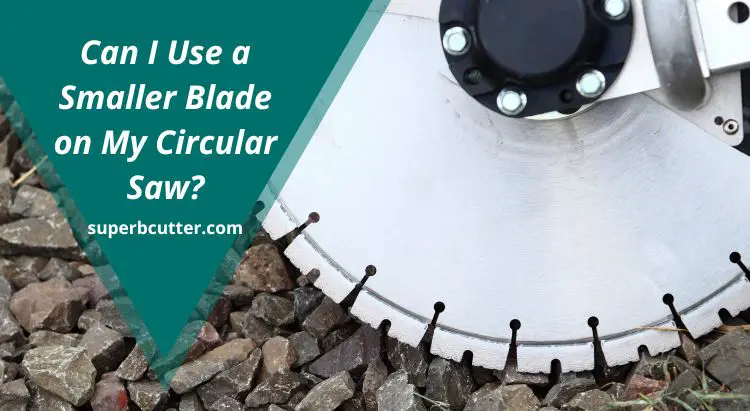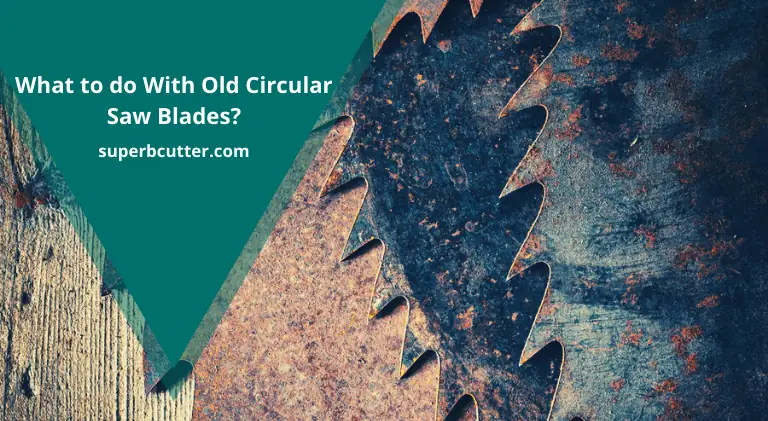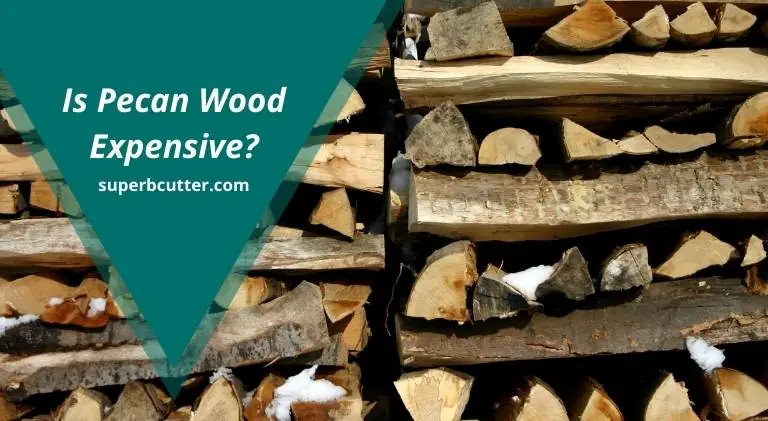60 Vs 80 Tooth Miter Saw Blade – Which One to Choose?
60 vs 80 tooth miter saw blade, which one is best for you?
60 tooth miter saw blades are the best options for ripping the wood. While the 80 tooth miter saw blades produce finer results due to the higher number of teeth. Both have their pros and cons though.
If you can’t decide between 60 vs 80 tooth miter saw blade, I would advise reading this article. It is because I have explained this topic in detail by comparing both types of blades and their applications.
In a hurry? Here’s a quick summary of the article!
| Feature | 60 Tooth Saw Blade | 80 Tooth Saw Blade |
| Number of Teeth | Lower | Higher |
| Cut Output | Rough | Smooth |
| Cut capability | Good for ripping | Good for fine cuts |
| Kerf Size | Thick | Think |
| Suggested use | Thicker wood, metal, etc | Plastic, hardwood, etc |
Difference Between 60 vs 80 Tooth Miter Saw Blade

The main difference between 60 vs 80 tooth miter saw blade is the number of teeth per inch. The more teeth, the stronger and smoother the cut will be on your material.
60 tooth blades are best for general purpose cutting in a variety of materials like thicker wood. They can handle most applications without needing to change out blades for every project, but they also don’t offer as smooth cuts as an 80 tooth blade would provide.
80 tooth blades are only appropriate for use in a specific type of material. Due to the higher number of teeth per inch, the blade can produce very smooth cuts without chipping the wood.
However, it may not be able to work on thick materials such as metals and thicker wood (in most cases). However, it doesn’t mean one blade is better than the other one because it depends upon the applications completely.
For example, someone who is looking for a blade for ripping or crosscutting applications must choose a 60 tooth miter saw blade. Having that said, people who want a finer and neater outcome should prefer a higher number of teeth.
Is it Better to Have More Teeth on a Mitre Saw Blade?
It depends on the applications. Since most of the times miter saws are used to produce angled cuts, therefore, more teeth will help in such situations. However, for ripping or crosscutting, fewer teeth should be preferred.
As mentioned above, the number of teeth has a direct relation with the final output. For instance, you are going to cut thicker wood with a miter saw. And let’s say you have mounted an 80 tooth miter saw blade then chances are you may not finish the job efficiently.
Due to the thickness of the wood, the blade will have a hard time ripping through it. Since there is a large number of teeth per inch, therefore, they won’t have enough room for cutting the wood grain.
As a result, your blade will heat up, sometimes you may also face kickback issues too!
How Many Teeth Should a Miter Saw Blade Have?
The number of teeth a miter saw blade should have varies from project to project. Therefore, it depends on what the miter saw is used for. As a general rule of thumb, fewer teeth are better for ripping projects while more teeth are suitable for smoother cuts.
I hope this will give you a rough idea but if that isn’t enough for you then let’s get a bit more in detail for this one.
If you take a look at the table given below, you will find the type of cut and the number of teeth required for it respectively. This will make it a lot easier for you to understand the difference between 60 vs 80 tooth miter saw blade.
| Type of Cut | Required Number of Blade Teeth |
| CrossCut | 80 tooth saw blade |
| Rip-Cut | 60 tooth saw blade |
| Miter Cut | 80 tooth saw blade |
| bevel cut | 80 tooth saw blade |
What is a 60 Tooth Saw Blade Used For?
This blade is best suited for cutting soft materials, so it’s excellent when dealing with delicate metals and plastics.
it won’t do well in heavy-duty applications which require a lot of force or pressure like hardwoods.
However, the 60 tooth miter saw blades are perfect for using on thinner pieces as they produce smoother cuts without any splinters!
Combining this blade with an appropriate lubricant will help to maximize your performance while minimizing the risk of sustaining injuries from jagged edges that might break off during use.
The downside? these types of blades are not suitable for producing finer cuts because of the distance between the teeth per inch. Therefore, they will more likely to chip the wood during the process.
What is a 80 Tooth Saw Blade Used For?
80 tooth saw blades are used for projects that require a lot of precision and finer results. Crown molding, picture framing, door framing, and shoe molding are all projects that require more accuracy and smoother results. Therefore an 80 tooth blade is more preferred here.
It means that you don’t have to worry about having a blade change halfway into a project because of its versatility in handling different thicknesses (although be aware that these types of blades are more susceptible to breaking).
You’re less likely to make a mistake, which is definitely worth it when working with expensive materials and hardwoods! It’s also easier on your blade.
There are a few other things that you need to consider while choosing a miter saw blade for your projects. Whether you are into picture framing projects or composite decking, you will have to keep these points in mind.
60 Tooth VS 80 Tooth Miter Saw Blade – Additional Factors
Let’s take a look at some factors other than the teeth count when choosing the right type of blade for your projects.
Side Clearance
60 tooth and 80 tooth blades have different side clearance. The gap between the teeth of a blade is called side clearance, and it affects the way that material will be cut by the saw as well as how much pressure you need to put on while working.
The width of this space can vary from each type; 60 has about 0.08 inches whereas 80 goes up to about 0.13 inches deep when the wood passes through it during use
When considering your project, keep in mind what kind of materials you are cutting with your miter saw blade so you know which one to choose for best results: hard or softwoods?
Hardwood needs more power than softer ones, but because they usually don’t cause any damage to the blade, 60 tooth blades are more than sufficient for these applications.
Softwood is fragile and can break your blade if not cut with a gentler approach
80 teeth are better suited for this type of material because they work best when cutting through hardwoods as well as softwoods.
For smaller projects or finer cuts where you don’t need a lot of power, either blade will do, but 80 teeth tend to be preferred in most cases.
The wider set-up allows for more control over how deep each tooth goes into the wood without risking breakage from too much pressure on one side.
Gullet
The gullets are the spaces between teeth where they’re designed to remove shavings.
A 60 tooth blade has smaller gullets and requires more pressure on it, but is better suited for softer woods because of its wider spacing
An 80 tooth blade has larger gaps that require less force from you in order to produce a cut with the same depth as a 60 tooth saw would give.
It is also good for harder wood types because the surface of these blades will have more teeth on them, making them less likely to break if too much pressure is applied.
These blades have been known to work very well against hardwoods like oak or maple without so much trouble while still doing just fine with softwood boards such as pine or balsa. This blade is also a better option for cutting thin sheets of material.
The 80 tooth blade requires less pressure to cut through hardwoods like oak or maple but needs more work against the softer ones such as pine or balsa.
One downside of this type of saw is that it produces lots of dust when cutting softwood because there is a gap between the teeth.
Use the 60 tooth miter saw blades because they are good for boards that need less pressure. They also work well with harder wooden materials.”
Hook Angle:
The hook angle is the angle that the blade has on its contact with wood. The higher the teeth are from horizontal, the greater difficulty they will have in cutting through material and making a clean cut.
You want to be using blades that have an upper rake between five degrees and ten degrees for best results.
Anti-vibration Slots:
Anti-vibration slots are specifically designed to reduce noise and vibration. This is important because the more powerful a saw, the greater chance there will be of hearing it in your ears.
When it comes to choosing a miter saw blade you don’t need to just look at the number of teeth but also consider the anti-vibration slots
Types of Blades
Based on different properties, a saw blade can be divided into the following main categories.
- Ripping Blade
- Crosscut Blade
Let’s take a look and see the properties and applications of each one of the above-mentioned saw blades.
Ripping Blade
The first one is a rip blad that is mainly used for ripping wood or plastic into pieces. It can be mounted on a miter saw, a circular saw, or even radial arm saws. The main feature of this type of saw blade is its fewer teeth.
Not only does it have fewer teeth but it also has large gullets which make the ripping job easier. due to the fewer teeth and larger gullets size it is able to remove a large number of shavings and dust.
Another property that distinguishes the ripping blade from other types of blades is its kerf size. As seen on most job sites, rip blade usually has a thicker kerf size than the fine cut blades. It is because they are not designed for precision.
Crosscut Blade
The cross-cut blade is another blade type that is mainly used for woodworking applications on the job site. This type of blade is different than the rip blade because of its various properties.
The first thing is the tooth count. As well all know tooth count is our main topic, therefore, we are more concerned about it. Now speaking of the tooth count, a cross-cut blade comes with a higher number of teeth which makes it able to produce a smoother cut.
This higher number of teeth not only makes it able to produce a smoother cut but also allows the reduce the effort required to run the blade. You can easily mount it on your sliding compound miter saw and start working on any project that requires accuracy.
In addition to this, such type of blade can also work well with a radial arm saw. Moreover, to produce a smoother cut surface people, usually like thin kerf blades because of their finer output.
Top 10-inch 60 Tooth Blades

- Tougher tungsten carbide stays sharper longer
- Thin kerf for fast and smooth cutting action and the arbor size is 5/8.
- Computer-balanced plate reduces vibration for improved accuracy and better finish
- Durable tungsten carbide maintains a true edge
- Best used for miter saw and slide miter saw jobs

- Micro-grain carbide teeth are honed with up to 600 grit for a mirror finish
- Fully hardened and expertly hand tensioned steel saw plates for true cuts
- Ultra thin kerf .091″, 5 degree hook angle, and .071 plate thickness
- Smooth crosscutting
- Ideal for: particle board and laminates

- Featuring a 10-inch diameter (254 mm), a 5/8-inch arbor (15.88 mm) and a rating of up to 6000 rpm
- Perfect for slicing through both hard and softwoods of all kinds
- Ultra-thin 1/10-inch kerf (2.4 mm) provides clean and efficient cuts
- Designed with 60 carbide-tipped teeth for fine-finish wood cutting
- Compatible with the majority of 10-inch miter saws, jobsite saws, and table saws
Top 10-inch 80 Tooth Blades

- Easy to use
- Manufactured in china
- 10-inch 80t ultra-fine finish cut-off blade
- 5/8-inch arbor
- Laser-cut stabilizer vents trap noise and vibration keeping it cool and reducing blade warp

- Premium micro-grain carbide produces ultra-sharp cutting edges that dramatically reduce splintering
- Precision balanced, laser-cut body provides extremely accurate cuts
- Exclusive dampening slots reduce vibration to enhance cutting accuracy
- Tough coat finish reduces heat, friction, and gum to promote blade life

- Up to 100% faster cutting compared to standard blades
- Up to 30% more cuts per charge compared to standard blades
- Thin kerf carbide-tipped design provides smoother cuts with less drag on the motor and minimal mater
- Special atafr (alternate top alternate face w/ raker) carbide tips provide smoother and faster cuts
- Specially engineered teeth assist to reduce the load put on the tool while cutting
Conclusion
There is no clear winner when it comes to 60 vs 80 tooth miter saw blade. It is because each one has its own applications, capabilities, and drawbacks. If you are looking for a blade that can help you with a variety of projects, then a 60 tooth blade would be the way to go.
If you are looking for more power or an edge that will let you cut through thicker materials like hardwood and metal, then an 80 tooth blade is right for you.
Besides that, as the number of teeth increases the cuts get smoother. Therefore, if you are working on a project that requires precision then I would recommend going for an 80 tooth blade.
References
- Effect of number of saw blade teeth on noise level and wear of blade edges during cutting of wood
- EFFECT OF THE SAW BLADE TEETH NUMBER ON TRANSVERSE CUTTING PROCESS NOISE WHEN CUTTING BEECHWOOD.
- Roughness of surface created by transversal sawing of spruce, beech, and oak wood
- Cutting power during cross-cutting of selected wood species with a circular saw
- How Many Tooth Hops Does It Take To Accurately Measure Saw Blade Teeth-Per-Inch in Bone?



![What Size Nails For Baseboard Trim - [Read This First] 12 What Size Nails For Baseboard Trim – [Read This First]](https://www.superbcutter.com/wp-content/uploads/2022/01/What-Size-Nails-for-Baseboard-Trim-1.webp)
